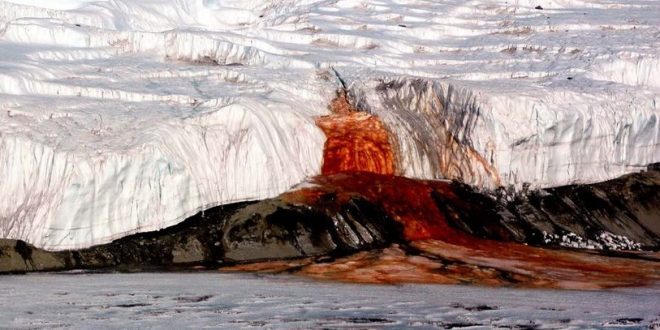Researchers from the University of Alaska Fairbanks and Colorado College have unraveled the mystery of a red waterfall in Antarctica. The research unveils mechanisms potentially at work in other polar glaciers.
When explorers discovered the seemingly bloodstained face of the Taylor Glacier in Antarctica in the early 1900s, they thought it was red algae that colored the macabre falls oozing from the ice.
Scientists later theorized that it was neither blood nor algae flowing down the glacier. Instead, the so-called Blood Falls is created as iron-rich saltwater oxidizes. Now, a study published this month in the Journal of Glaciology has confirmed theories that a million year-old saltwater lake is trapped beneath the glacier, leaching iron from the surrounding bedrock, and that a “hydrologic system” is carrying the rust-red brine through pressurized crevasses in the ice.
To trace the path of the red saltwater, the team used radio-echo sounding to amplify the contrast between the fresh glacial ice and the salty brine. What they found is a complex, upstream network that spans nearly 1,000 feet.
Their findings don’t just explain how Blood Falls is being supplied with an endless stream of primordial seawater — the results also explain how liquid water is able to continue flowing for millennia through solid ice.
“While it seems counterintuitive,” glaciologist Erin Pettit told Science Daily, “water releases heat as it freezes, and that heat warms the surrounding colder ice.”
The mystery of Antarctica’s Blood Falls might be solved, but it’s still a pretty ghastly sight — especially when you consider the perfectly preserved remains of penguins and seals trapped on the glacier.
Agencies/Canadajournal
 Canada Journal – News of the World Articles and videos to bring you the biggest Canadian news stories from across the country every day
Canada Journal – News of the World Articles and videos to bring you the biggest Canadian news stories from across the country every day



